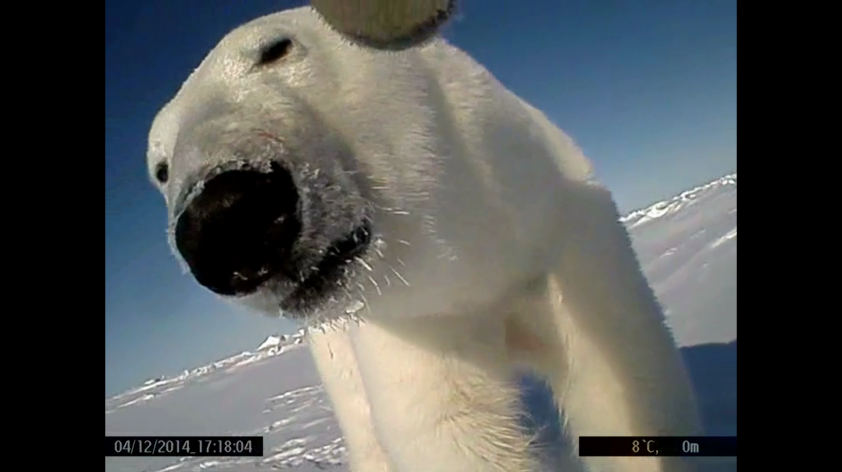
Using Conservation Technology to Study Polar Bears in the Wild
Polar bears live in a remote and inhospitable environment. They can move remarkable distances on the sea ice, they’re large, and carnivorous. These traits have made polar bears exceptionally challenging to study, particularly in trying to address basic questions such as how much polar bears eat in the wild, how sea ice conditions affect their hunting success, and how their behaviors may change with sea ice conditions.
We know polar bears rely on the sea ice for catching seals, which are their primary prey. In fact, their classification as a marine mammal is reflective of their reliance on sea ice to catch seals in the marine ecosystem. But ongoing and forecasted declines in Arctic sea ice as a result of global climate change is rapidly altering this marine environment and likely impacting their ability to catch seals.
In the Beaufort Sea north of the coast of Alaska, research has documented declines in polar bear abundance, survival, and body condition as a result of declines in Arctic sea ice. Despite these findings, much remains unknown about polar bear behavior on the sea ice and the effects of changing sea ice conditions on polar bear food demands.
My research has combined recent innovations in electronic tracking technology with data from captive polar bears and grizzly bears to gain new insight into polar bear habitat use and energy expenditure. Polar bears at the Oregon Zoo and the San Diego Zoo, and grizzly bears at Washington State University, were trained to voluntarily rest and walk on a motorized treadmill.
This allowed us to measure the energy expenditure of these animals while simultaneously using an accelerometer to measure changes in their fine-scale body movements. These measurements helped us develop a method to measure energy expenditure solely using accelerometers (in a similar way that a Fitbit measures a person’s energy expenditure). These accelerometers are tiny electronic devices that are being incorporated into satellite collars on polar bears, providing a way to measure the energy expenditure of free-roaming polar bears on the sea ice for extended durations.
My ongoing research is using these relationships to measure the energy expenditure of wild polar bears in the Beaufort Sea from the spring through the fall. In combination with GPS location data, this work will provide detailed information on the effects of sea ice conditions on polar bear energy demands to understand the rate at which polar bears need to be catching seals to survive.
Additionally, polar bears in the Beaufort Sea have increasingly begun using land habitats in the summer and fall and this research will help to understand the energetic benefits or costs of moving to land compared with remaining on the rapidly diminishing summer sea ice.
In conjunction with my previous research using video camera collars on polar bears in the spring, this work is helping to better understand the implications of forecasted declines in Arctic sea ice on polar bear body condition and survival.
Anthony Pagano is a post-doctoral fellow with the Institute for Conservation Research, and in collaboration with the United States Geological Service in Alaska, and Polar Bears International.













